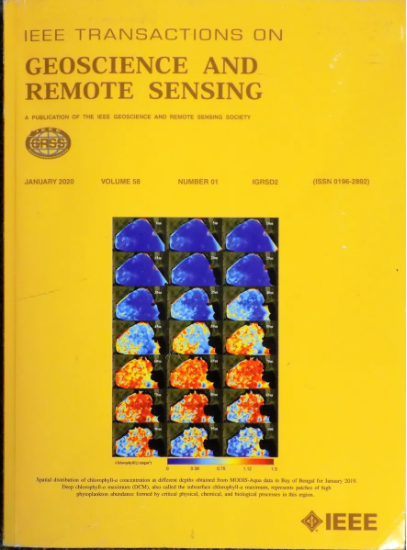基于可调核和多域关注的RS图像去模糊和超分辨率联合算法
IF 8.6
1区 地球科学
Q1 ENGINEERING, ELECTRICAL & ELECTRONIC
IEEE Transactions on Geoscience and Remote Sensing
Pub Date : 2024-12-11
DOI:10.1109/TGRS.2024.3515636
引用次数: 0
摘要
遥感图像去模糊和超分辨率是计算机视觉中常见的任务,其目的分别是恢复遥感图像的细节和空间尺度。然而,现实世界的RS图像经常遭受全局低分辨率(LR)退化和局部模糊退化的复杂组合。尽管精心设计的去模糊和SR模型分别在这两项任务上表现良好,但由于同时重建全局和局部退化的关键困境,统一的RS图像去模糊和SR (JRSIDSR)任务仍然具有挑战性。此外,现有的方法难以捕捉去模糊和SR过程之间的相互关系,导致次优结果。为了解决这些问题,我们对遥感图像的空间退化和模糊退化过程进行了统一的理论分析,并提出了一种用于JRSIDSR任务的双分支并行网络——可调核多域网络(AKMD-Net)。AKMD-Net包括两个主要分支:去模糊分支和SR分支。在去模糊分支中,我们设计了一个像素可调核块(PAKB)来估计局部和空间变化的模糊核。在SR分支中,提出了一种多域注意块(multi-domain attention block, MDAB)来捕获高频细节增强的全局上下文信息。此外,我们开发了一个自适应特征融合(AFF)模块来模拟去模糊和SR分支之间的上下文关系。最后,我们设计了一种自适应维纳损耗(AW loss)来抑制重构图像中的先验噪声。大量的实验表明,所提出的AKMD-Net在常用的RS图像数据集上实现了最先进的(SOTA)定量和定性性能。源代码可以在:https://github.com/zpc456/AKMD-Net上公开获得。本文章由计算机程序翻译,如有差异,请以英文原文为准。
Jointly RS Image Deblurring and Super-Resolution With Adjustable-Kernel and Multi-Domain Attention
Remote sensing (RS) image deblurring and super-resolution (SR) are common tasks in computer vision that aim at restoring RS image detail and spatial scale, respectively. However, real-world RS images often suffer from a complex combination of global low-resolution (LR) degeneration and local blurring degeneration. Although carefully designed deblurring and SR models perform well on these two tasks individually, a unified model that performs jointly RS image deblurring and SR (JRSIDSR) task is still challenging due to the vital dilemma of reconstructing the global and local degeneration simultaneously. In addition, existing methods struggle to capture the interrelationship between deblurring and SR processes, leading to suboptimal results. To tackle these issues, we give a unified theoretical analysis of RS images’ spatial and blur degeneration processes and propose a dual-branch parallel network named adjustable-kernel and multi-domain network (AKMD-Net) for the JRSIDSR task. AKMD-Net consists of two main branches: deblurring and SR branches. In the deblurring branch, we design a pixel-adjustable kernel block (PAKB) to estimate the local and spatial-varying blur kernels. In the SR branch, a multi-domain attention block (MDAB) is proposed to capture the global contextual information enhanced with high-frequency details. Furthermore, we develop an adaptive feature fusion (AFF) module to model the contextual relationships between the deblurring and SR branches. Finally, we design an adaptive Wiener loss (AW Loss) to depress the prior noise in the reconstructed images. Extensive experiments demonstrate that the proposed AKMD-Net achieves state-of-the-art (SOTA) quantitative and qualitative performance on commonly used RS image datasets. The source code is publicly available at:
https://github.com/zpc456/AKMD-Net
.
求助全文
通过发布文献求助,成功后即可免费获取论文全文。
去求助
来源期刊

IEEE Transactions on Geoscience and Remote Sensing
工程技术-地球化学与地球物理
CiteScore
11.50
自引率
28.00%
发文量
1912
审稿时长
4.0 months
期刊介绍:
IEEE Transactions on Geoscience and Remote Sensing (TGRS) is a monthly publication that focuses on the theory, concepts, and techniques of science and engineering as applied to sensing the land, oceans, atmosphere, and space; and the processing, interpretation, and dissemination of this information.
 求助内容:
求助内容: 应助结果提醒方式:
应助结果提醒方式:


